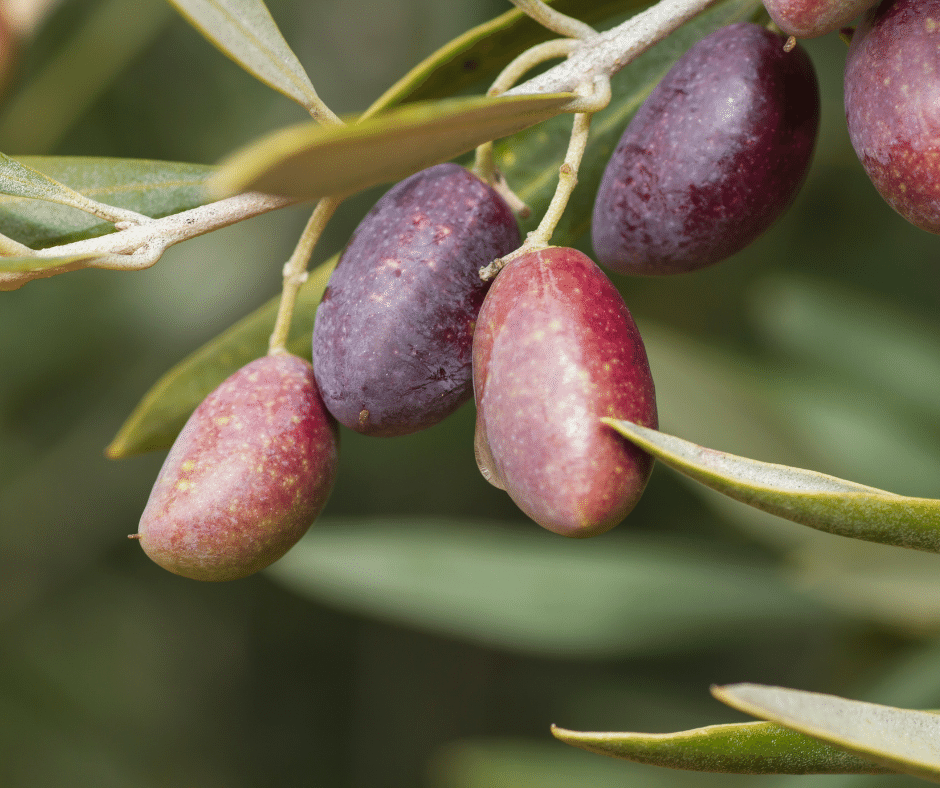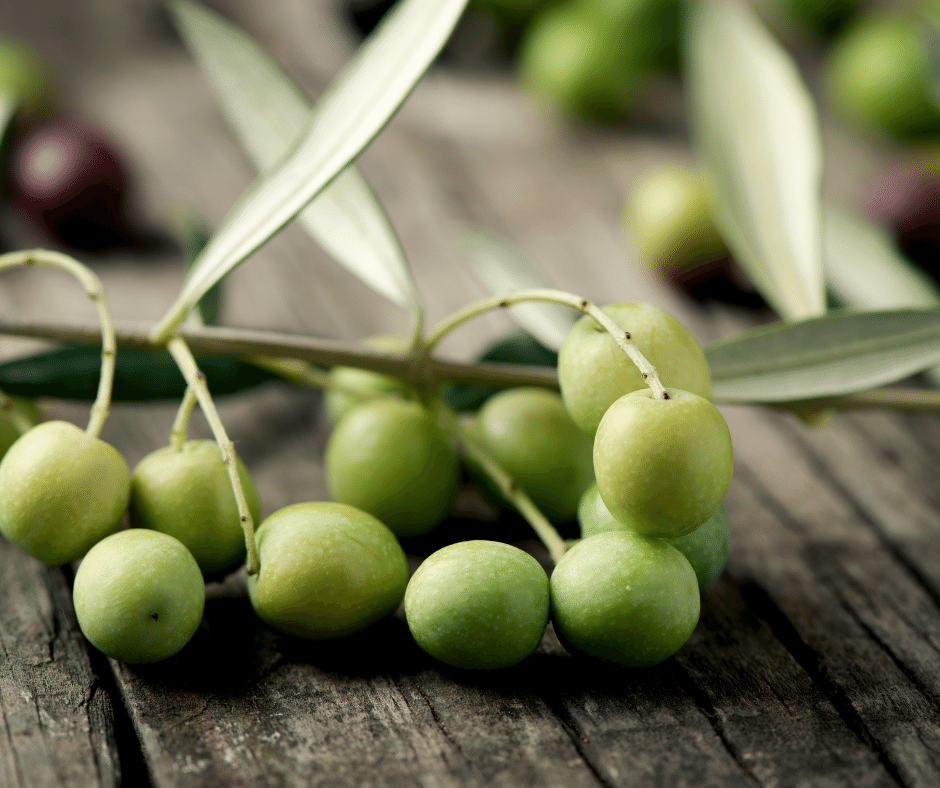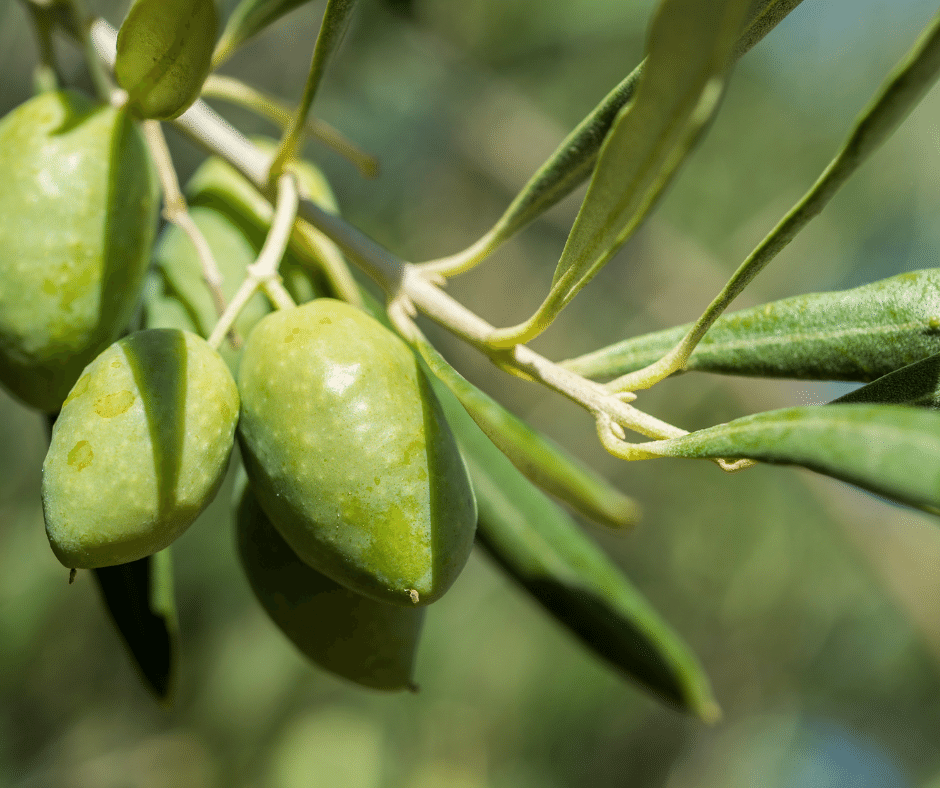Table of Contents
Types of Olive Oil
The most popular olive oil for consumers is “extra virgin”, but there are other types of olive oil. The grades of olive oil are:
- Extra Virgin- Extra Virgin Olive oil (EVOO) has the least amount of acidity, which must be less than 1%. Experts agree it has most of the health benefits associated with olive oil as it is rich in antioxidants called polyphenols, which have anti-inflammatory properties. EVOO also has the best flavor, aroma, and is the highest grade available. EVOO is often considered the best olive oil.
- Virgin- Virgin olive oil has between 1-2% acidity. It’s produced the same way as EVOO, with a milder taste and minimal flaws.
- Ordinary Virgin- Ordinary virgin olive oil is only sold to wholesalers, so you won’t see it available for retail purchase. It has a 3.3% or lower acidity level.
- Lampante Virgin- Lampante virgin olive oil is also only sold to wholesalers. Like Ordinary Virgin olive oil, it must have a 3.3% acidity level or lower. This type of olive oil is marked undesirable, either for its flavor or aroma. It is put through a refining process to eliminate both its flavor and aroma.
- Light- Light olive oil is a type of refined olive oil, which has been treated with heat or chemicals after it’s been pressed. It’s more golden in color than green. It has a higher smoking point but also has fewer nutrients.
Spanish Olive Varieties
Spain has 268 olive tree varieties, each having its distinctive taste, characteristics, and aroma. The four most popular Spanish olives for olive oil are:
- Picual- The picual olive has green notes similar to tomatoes and green almonds. It tends to taste more bitter and increases in flavor after the first few seconds. It maintains its flavor over time and works well for cooking with high temperatures.

- Arbequina- Arbequina has a more mild flavor but also has fruity-sweet notes. It’s more agreeable for those who don’t have an acquired taste for bitter olive oil. It tastes good on its own or as part of a blend. It doesn’t cook well under high temperatures.

- Hojiblanca- Hojiblanca has a unique flavor with hints of green leaves, grass, and spice. It’s reminiscent of green peppercorn and is exceptionally flavorful.

- Cornicabra- The Cornicabra olive oil smells sweet like green apples, but has a strong and bitter flavor. It produces high-quality oils that cook well under high temperatures.

Olive Oil Processes
When looking for types of olive oil, you will see some key terms to differentiate between the varieties. They are:
- Refined- After pressing, refined olive oils have a second production, often including heat or chemicals. Sometimes the olive oil is mixed with other types of oil, resulting in a lower-quality oil.
- Unrefined- Olives are washed, filtered, and decanted, but there is no second production after pressing. No heat or chemicals are used on the olive oil. Unrefined olive oils are of higher quality.
- Cold-pressed- Cold-pressed olive oils are the highest quality olive oil, as they are the least-refined olive oils.
How Olive Oil is Made
How does olive oil go from the tree to the bottle on the grocery store shelf? It’s a historic process of harvesting, production, and bottling correctly so the best-quality olive oil reaches your shelf.
- Harvest- Many harvesters place nets around the base of the trees to catch ripe olives when they fall off the trees. Some others use wide-tooth blades to comb the branches, pushing the olives off the tree. Once they’re collected, they’re transported to the production site.
- Production- Once they enter the production stage, the olives are crushed, kneaded, or mixed to create a thick olive paste. Then the olive paste is remixed to extract the oil. The oil is separated from water and solids.

- Bottling- Once the oil is produced, it must be filtered from its natural pulp and water to leave the remaining oil. To filter the oil, it’s decanted and moved to stainless steel tanks. Bottlers then move the oil to glass or stainless steel tins for distribution.

Olive Oil Buying Guide: Which Olive Oil Should You Choose?
Olive oil can be used in many different ways, and some oils are better for certain purposes.
- Frying- EVOO has a relatively low smoking point at 375 degrees Fahrenheit, which isn’t as effective for frying. Choose an olive oil that’s marked as light or refined, as these will have higher smoking points.
- Salad Dressing- For salad dressing, EVOO adds the best flavor as it is the highest quality of oil. Even adding a drizzle of EVOO adds depth of flavor to the simplest salads.
- Dipping- Since the flavor of the oil is front-and-center regarding dipping, you need the highest-quality oil. Cold-press and unrefined EVOO are the best and will lend the best flavor, aroma, and texture.
Olive oil has been popular in Spain for its many uses as well as its health benefits. Knowing the type of olive oils and their uses will help you make your cooking better and more flavorful.
Le Gourmet Central’s imported Gourmet Olive Oils are specially crafted in Spain and Italy. Available in Extra Virgin, organic, infused and flavored varieties like garlic and truffle, Le Gourmet Central offers the most selected oil brands from Europe. When looking for Spanish products online, look no further than legourmetcentral.com